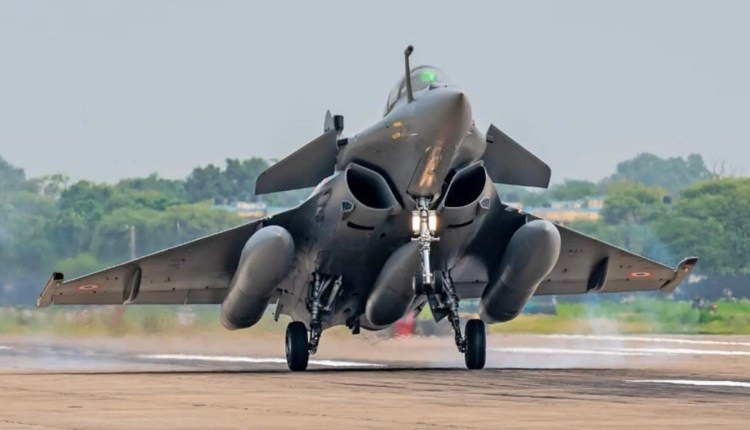India's rejection of a request by a team of auditors from French aerospace company Dassault Aviation
Defence affairs - open source defence analysts
Reports from international intelligence sources and open-source defense analysis channels confirmed that Dassault Aviation has sent a special team to India to investigate whether there are systemic weaknesses in the Rafale aircraft that may have contributed to the loss of the asset.
However, the Indian government has reportedly blocked the team's access to the IAF's Rafale squadron, sparking speculation that New Delhi is trying to hide larger internal weaknesses involving operational readiness, maintenance and pilot competence.
This situation escalated after Pakistani Prime Minister Shehbaz Sharif's statement on May 17, claiming that the Pakistan Air Force (PAF) had successfully shot down six Indian fighter jets in the most serious air battle between the two South Asian nuclear powers in the past two decades.
In an initial statement, Pakistan claimed that five IAF aircraft were shot down—including three Rafale jets, a Su-30MKI, and a MiG-29—using Chinese-made PL-15E Beyond Visual Range (BVR) missiles launched from PAF's J-10C aircraft.
Shehbaz then added that the sixth aircraft successfully shot down by Pakistan was an IAF Mirage 2000 in a night operation in the Pampore area, east of Srinagar, between May 6 and 7.
Pakistani Foreign Minister Ishaq Dar added to the pressure with a bold statement: "The much-hyped Rafale jets have failed miserably, and the Indian Air Force pilots have proven to be incompetent."
According to regional defense analysts, the downed IAF aircraft are believed to have been targeted by Pakistan's J-10C or JF-17 Block III aircraft equipped with BVR PL-15 missiles manufactured by the China Airborne Missile Academy (CAMA).
The J-10C aircraft developed by Chengdu Aircraft Industry Group (CAIG) is a 4.5 generation aircraft with an AESA radar system and advanced electronic warfare capabilities, while the JF-17 Block III is the result of a joint venture between CAIG and the Pakistan Aeronautical Complex (PAC) which is now the backbone of Pakistan's multi-role strike operations.
Reports also suggest that some Indian aircraft have been attacked from a distance of up to 182 kilometers, taking full advantage of the capabilities of the PL-15 missile which has an operational range of between 200 to 300 kilometers with highly accurate active radar guidance capabilities.
Analysts believe the PAF may have launched the attack from within its own airspace, making this long-range strike a demonstration of air dominance capabilities without having to cross the border.
The ensuing air battle has been described by international observers as “the largest air battle of the 21st century,” with more than 125 aircraft from both countries engaged in a high-tech combat situation that challenged modern network warfare tactics and missile capabilities.
At the same time, India is alleged to be concerned that Dassault Aviation will blame the Rafale's poor performance not on the aircraft's design, but on the IAF's internal system failures, including pilot shortages and prolonged maintenance delays.
A report by India's Auditor General (CAG) and the Parliamentary Defence Committee released months before the conflict confirmed that the IAF was short of 596 pilots—a figure that had increased from 486 in 2015.
Attempts to train 222 new pilots from 2016 to 2021 have also reportedly failed, exacerbating the human resource deficit in the country's air defense system.
The situation is made worse by maintenance problems with the Swiss-made Pilatus PC-7 Mk-II basic training aircraft, which is the backbone of Indian pilot training, but has been facing usability problems for the past few years.
At the time of the conflict, India had only 31 active fighter aircraft squadrons, far below the minimum number of 42 squadrons as outlined in the national defense doctrine.
French authorities are understood to be concerned because Rafale now seems to be a "scapegoat" for the weaknesses of India's military structure, whereas in other fields Rafale has proven its effectiveness when used properly, including in terms of integration, maintenance and training.



Comments
Post a Comment